- Clone
- A21001C (See other available formats)
- Regulatory Status
- RUO
- Other Names
- Protein kinase B alpha, PRK-BA, PKB, Serine/Threonine specific kinase RAC alpha, Protein kinase Akt, RAC
- Isotype
- Mouse IgG1, κ
- Ave. Rating
- Submit a Review
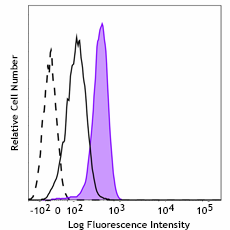
| Cat # | Size | Price | Save |
|---|---|---|---|
| 606553 | 25 tests | ¥28,600 | |
| 606554 | 100 tests | ¥83,600 |
AKT (also known as protein kinase B alpha) is a 60 kD serine/threonine-specific kinase containing a pleckstrin domain. AKT plays a critical role in controlling survival and apoptosis. This kinase is ubiquitously expressed and translocates to the membrane upon cell activation. It is activated by insulin and various growth and survival factors to function in a wortmannin-sensitive pathway involving PI 3-kinase. AKT is activated by phospholipid binding and activation loop phosphorylation at Thr308 by PDK1 and by phosphorylation within the carboxy terminus at Ser473. The previously elusive PDK2, responsible for phosphorylation of AKT at Ser473, has been identified as a mammalian target of rapamycin (mTOR) in a rapamycin-insensitive complex with rictor and Sin1. Activated AKT phosphorylates a wide range of substrates including transcription factors (e.g. FOXO1), kinases (GSK-3beta, Raf-1, ASK, Chk1) and other proteins with important signaling roles (e.g. Bad, MDM2). AKT promotes cell survival by inhibiting apoptosis through phosphorylation of several targets, including Bad, forkhead transcription factor, c-Raf and caspase-9. AKT also plays a critical role in cell growth by directly phosphorylating mTOR in a rapamycin-sensitive complex containing raptor. More importantly, AKT phosphorylates and inactivates tuberin (TSC2), an inhibitor of mTOR within the mTOR-raptor complex.
Product DetailsProduct Details
- Isotype Control
- PE Mouse IgG1, κ Isotype Ctrl (FC)
- Verified Reactivity
- Human, Mouse
- Antibody Type
- Monoclonal
- Host Species
- Mouse
- Immunogen
- Synthetic peptide of human AKT phosphorylated at Ser473
- Formulation
- Phosphate-buffered solution, pH 7.2, containing 0.09% sodium azide and BSA (origin USA)
- Preparation
- The antibody was purified by affinity chromatography and conjugated with PE under optimal conditions.
- Concentration
- Lot-specific (to obtain lot-specific concentration and expiration, please enter the lot number in our Certificate of Analysis online tool.)
- Storage & Handling
- The antibody solution should be stored undiluted between 2°C and 8°C, and protected from prolonged exposure to light. Do not freeze.
- Application
-
ICFC - Quality tested
- Recommended Usage
-
Each lot of this antibody is quality control tested by intracellular immunofluorescent staining with flow cytometric analysis. For flow cytometric staining, the suggested use of this reagent is 5 µL per million cells in 100 µL staining volume or 5 µL per 100 µL of whole blood. It is recommended that the reagent be titrated for optimal performance for each application.
- Excitation Laser
-
Blue Laser (488 nm)
Green Laser (532 nm)/Yellow-Green Laser (561 nm)
- RRID
-
AB_3068251 (BioLegend Cat. No. 606553)
AB_3068251 (BioLegend Cat. No. 606554)
Antigen Details
- Structure
- AKT is a 480 amino acid protein with a predicted molecular weight of 56 kD
- Distribution
-
Ubiquitously expressed, translocates to the membrane upon activation
- Function
- Catalytically inactive multimeric complex. AKT is activated by phospholipid binding and activation loop phosphorylation at Thr308 by PDK1 and by phosphorylation within the carboxy terminus at Ser473 by PDK2.
- Interaction
- Interacts through pleckstrin homology domain with second messengers. Interacts with AKTIP, CDKN1B.
- Antigen References
-
- Jacinto E, et al. 2006. Cell. 127:125-37.
- Inoki K, et al. 2002. Nat Cell Biol. 4:648-57.
- Franke TF, et al. 1995. Cell. 81:727-36.
- Brunet A, et al. 1999. Cell. 96:857-68.
- Yang WL, et al. 2010. Cell Cycle. 9:487-97.
- Gene ID
- 207 View all products for this Gene ID
- UniProt
- View information about AKT Phospho Ser473 on UniProt.org
Related Products
| Description | Clone | Applications |
|---|---|---|
| Cell Staining Buffer | FC,ICC,ICFC | |
| Intracellular Staining Permeabilization Wash Buffer (10X) | ICC,ICFC,IHC | |
| RBC Lysis Buffer (10X) | FC | |
| PE Mouse IgG1, κ Isotype Ctrl (FC) | MOPC-21 | FC |
| Human TruStain FcX™ (Fc Receptor Blocking Solution) | FC,ICC,ICFC | |
| True-Phos™ Perm Buffer | ICFC | |
| Lymphopure™ | Cell Sep - Pos,Cell Sep - Neg | |
| TruStain FcX™ PLUS (anti-mouse CD16/32) | S17011E | FC |
| Compensation Beads | FC |
Related Pages & Pathways
Pages
Related FAQs
- What type of PE do you use in your conjugates?
- We use R-PE in our conjugates.
Other Formats
View All AKT Phospho (Ser473) Reagents Request Custom Conjugation| Description | Clone | Applications |
|---|---|---|
| Purified anti-AKT Phospho (Ser473) | A21001C | WB,ICC,ICFC |
| Alexa Fluor® 647 anti-AKT Phospho (Ser473) | A21001C | ICFC |
| PE anti-AKT Phospho (Ser473) | A21001C | ICFC |
Customers Also Purchased
Compare Data Across All Formats
This data display is provided for general comparisons between formats.
Your actual data may vary due to variations in samples, target cells, instruments and their settings, staining conditions, and other factors.
If you need assistance with selecting the best format contact our expert technical support team.
-
Purified anti-AKT Phospho (Ser473)
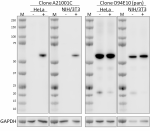
Whole cell extracts (15 µg total protein) from serum-starved... 
Untreated Jurkat cells (positive control, panel A) and Jurka... 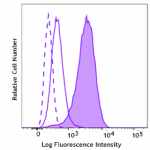
Jurkat cells untreated (positive target, filled histogram), ... -
Alexa Fluor® 647 anti-AKT Phospho (Ser473)
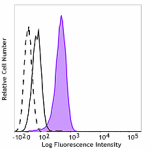
Jurkat cells untreated (positive control, filled histogram),... -
PE anti-AKT Phospho (Ser473)
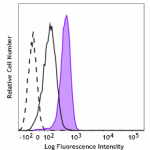
Jurkat cells untreated (positive control, filled histogram),...











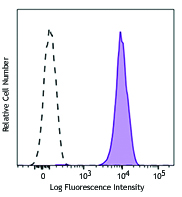
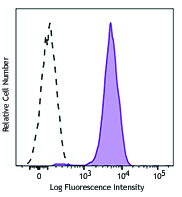
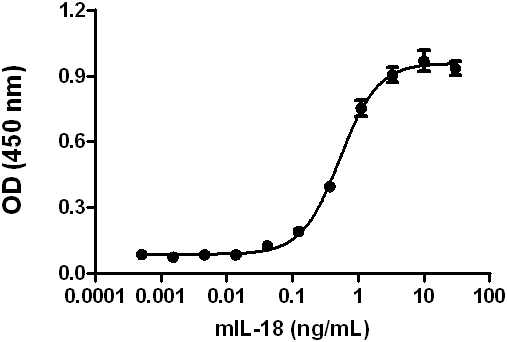
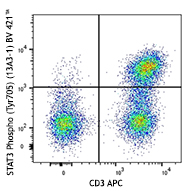



Follow Us